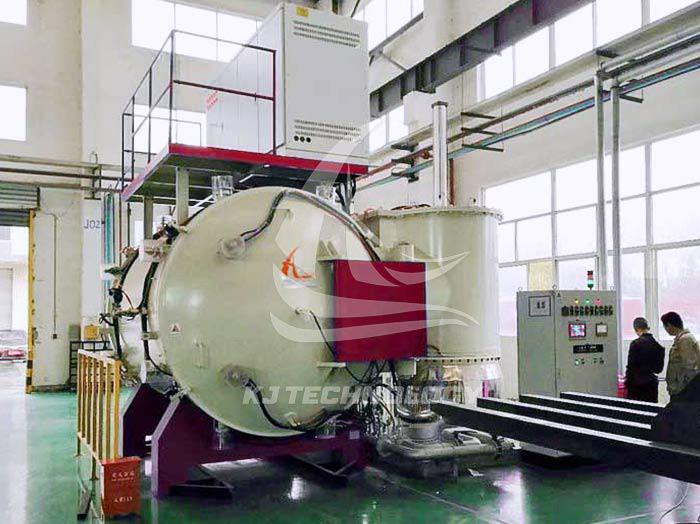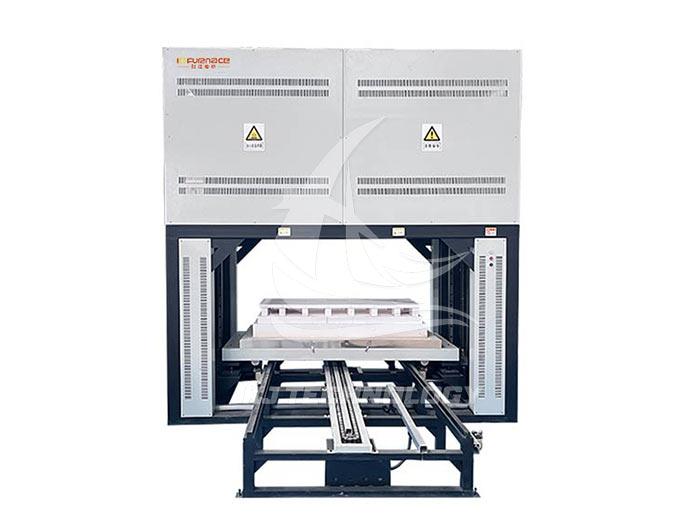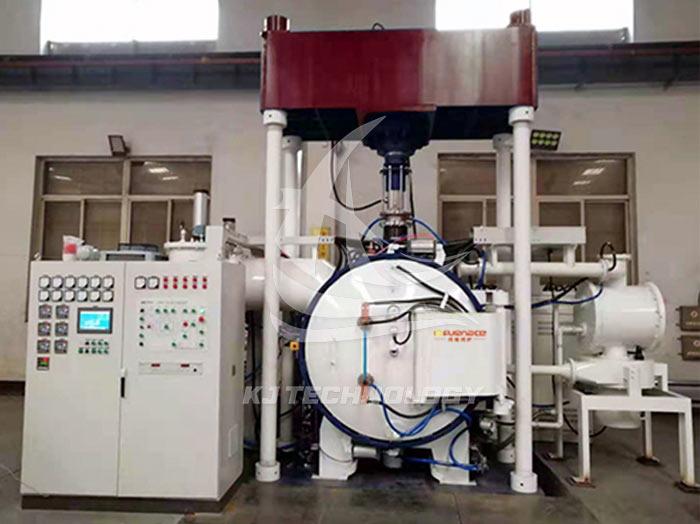Can electric heating vacuum heat treatment furnace be brazed?
 08-14-2025 Author: KJ technology
08-14-2025 Author: KJ technology
Electric heating vacuum heat treatment furnace can be used for brazing, which provides ideal conditions for brazing process through the combination of vacuum environment and electric heating technology. The specific analysis is as follows:
1. The core role of vacuum environment in brazing
Inhibit oxidation and pollution
In a vacuum environment, oxidizing gases such as oxygen and water vapor are completely eliminated, avoiding oxidation and contamination of metal materials during brazing. For example, brazing titanium alloys in air can easily form oxide films, leading to a decrease in joint strength, while a vacuum environment can ensure that the strength of titanium alloy brazed joints is increased to over 430 MPa (50% higher than hydrogen protected brazing).
Promote wetting and spreading of brazing materials
When the vacuum degree reaches 10 ⁻⁴~10 ⁻⁵ Pa, the oxide film on the metal surface is decomposed, and the brazing material (such as silver based and copper based alloys) can fully wet the base material, forming a dense and defect free weld. For example, aluminum alloy heat exchangers have a weld porosity of less than 0.1% after vacuum brazing, which is much better than atmosphere protected brazing.
Adapt to special material requirements
A vacuum environment can stabilize the chemical composition of high-temperature alloys, ceramics, and other materials containing easily oxidizable elements such as aluminum and titanium. For example, nickel based high-temperature alloys (such as Inconel 718) have a high-temperature strength retention rate of over 95% after vacuum brazing, meeting the stringent requirements of aircraft engine turbine blades.
2. Technical advantages of electric heating system
Accurate temperature control and uniform heating
Electric heating systems (such as molybdenum and graphite heaters) combined with zone temperature control technology can achieve temperature uniformity of ± 1 ℃. For example, when brazing honeycomb structures in aviation, temperature fluctuations should be controlled within ± 5 ℃ to avoid deformation caused by local overheating.
Wide temperature range coverage
The working temperature range of electric heating vacuum furnace is usually 100 ℃~2300 ℃, which can meet the brazing needs of different materials such as copper (melting point 1083 ℃), nickel (melting point 1453 ℃), ceramics (sintering temperature above 1600 ℃), etc.
Efficient and energy-saving design
The thermal efficiency of the electric heating system is over 95%, which is 40% more energy-efficient than gas stoves. For example, a certain model of vacuum brazing furnace with an installed power of ≤ 20kW can complete the brazing of complex aviation components, with energy consumption only 60% of traditional equipment.
3. Typical application scenarios and cases
aerospace field
Turbine blade brazing: Vacuum brazing technology is used to connect nickel based high-temperature alloy blades and titanium alloy disks, with joint strength reaching over 90% of the base material and temperature resistance increased to 1200 ℃.
Honeycomb structure manufacturing: Vacuum brazing achieves precise forming of honeycomb sealing rings for aircraft engines, with a weld strength of 430MPa, which is 50% higher than hydrogen protected brazing.
Automotive manufacturing field
Heat exchanger production: Aluminum alloy oil coolers are vacuum brazed, with a weld leakage rate of less than 0.01% and a lifespan extended to over 200000 kilometers.
Stainless steel insulated cup: Vacuum brazing technology achieves a Ra0.2 μ m weld surface finish on the cup body, eliminating the need for subsequent polishing and increasing production efficiency by 30%.
Electronic and electrical field
Integrated circuit packaging: Vacuum brazing enables precise connection of small components (such as sensor chips), with solder joint diameters controlled within 0.1mm and reliability reaching 99.99%.
Ceramic metal composite materials: By using active brazing materials (such as AgCuTi) and vacuum brazing, a strong bond between ceramics and metals is achieved, with an interface bonding strength of over 150MPa.
4. Equipment type and process selection
Hot wall furnace
Features: The heating chamber is separated from the vacuum chamber, and the container can be cooled outside the furnace after brazing, shortening the production cycle.
Application: Suitable for mass production of small and medium-sized parts, such as automotive heat exchangers and electronic connectors.
Cold wall furnace
Features: The heating chamber and vacuum chamber are integrated, with a water-cooled furnace wall design. The maximum temperature can reach 2200 ℃, and the vacuum degree is below 1.35 × 10 ⁻⁴ Pa.
Application: Suitable for high-temperature brazing of large welding parts, such as aircraft engine turbine disks and wind turbine main shafts.
Dual chamber/multi chamber furnace
Features: Seamless connection of furnace loading, brazing, and cooling is achieved through continuous operation, increasing productivity by more than 50%.
Application: Suitable for large-scale production lines, such as automated brazing of stainless steel insulated cups and aluminum alloy wheels.








